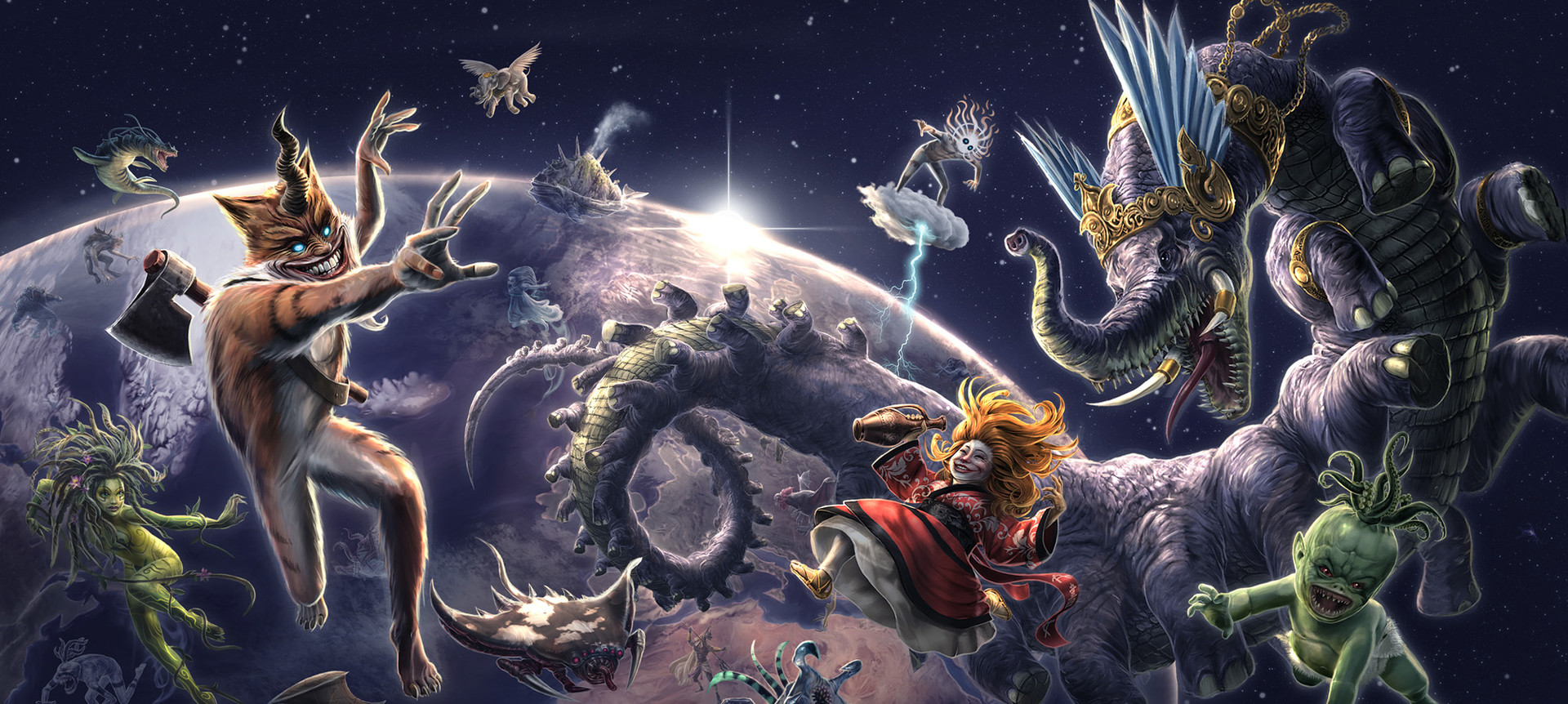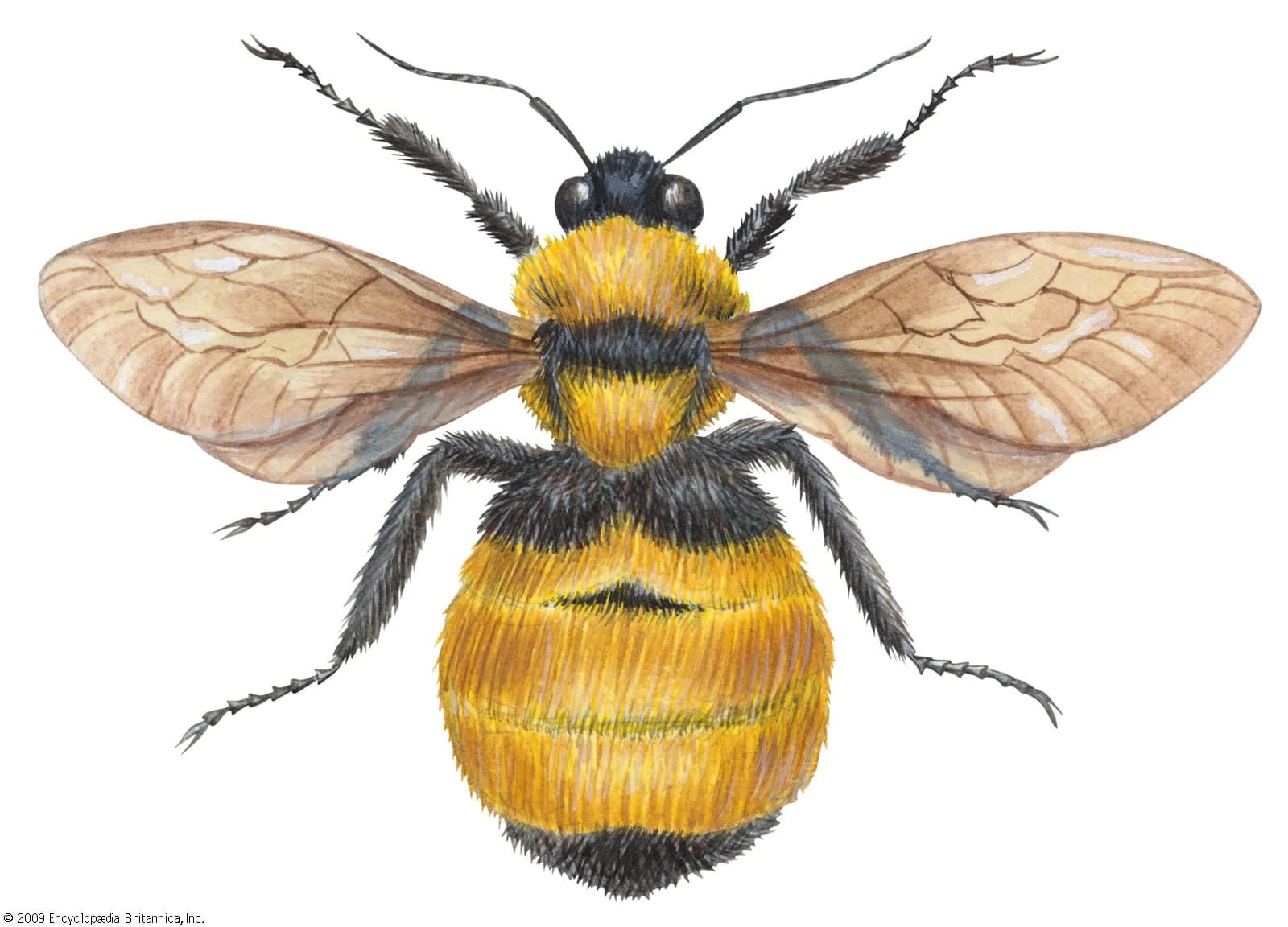Kimakeza
A rat-sized flying hive insect, they resemble bees in appearance, both in looks and colors.
The only reason to approach a Kimakeza hive is to attempt to collect some of their poison, which can be used in the processing of medicines, or for Kimakeza Jelly, a highly nutritious goo-like substance found inside the egg sac of the Queen. In order to get it, one must keep the Queen both alive and attached to her egg sac, otherwise the jelly becomes the poison.
Basic Information
Anatomy
There are three main types; Drones, which collect vegetation and small animals for the hive to consume; Guardians, larger insects with a thick carapace and blade-like barbed forelegs; and the Queen, which resides inside the hive at all times, consuming all that is brought to it and producing more Kimakeza from its massive egg sac.
Genetics and Reproduction
Starting as an egg, the larvae hatch after only a few days, where they are left in a large pit. They will attack and consume each other until only a few dozen are left. These remaining larvae will then be collected by the hive, being separated into cocoons make of a hard wax-like substance, where they will pupate. The most voracious of the larvae become Guardians, while any larvae that managed to escape or did not consume enough of their kin become Drones.
When a Queen dies, if they are still attached to their egg sac, they will release a hormone into the egg sac that causes all the remaining eggs to mature incredibly quickly, hatching inside the egg sac and consuming any unhatched eggs and other larvae. Once one larva remains, usually having grown to a massive size compared to other larva, it will pupate inside the now hardened egg sac, before emerging a month or so later as a fully mature Queen, which will them go about growing her own egg sac to continue the process.
When a Queen dies, if they are still attached to their egg sac, they will release a hormone into the egg sac that causes all the remaining eggs to mature incredibly quickly, hatching inside the egg sac and consuming any unhatched eggs and other larvae. Once one larva remains, usually having grown to a massive size compared to other larva, it will pupate inside the now hardened egg sac, before emerging a month or so later as a fully mature Queen, which will them go about growing her own egg sac to continue the process.
Ecology and Habitats
Kimakeza prefer to establish their hives in large caves, building a series of walls to protect the entrance and the queen inside. The drones will then go out to gather as much food as possible from the surrounding area, carrying it back to the hive for storage and preparation. While not known to actively hunt, Kimakeza are fiercely territorial, and will attack any living creature that attempts to enter their hive for any reason.
There is also a subspecies of Kimakeza that live in the red sands of the Dragon Blood Desert, residing inside the body of Cave Worms, acting as both a defensive mechanism, and the creature's digestive system.
Dietary Needs and Habits
Kimakeza collect and eat almost anything, primarily highly nutritious plants and animal corpses. They are capable of consuming and digesting anything, as they will store the foodstuffs in 'jars' made of a hardened wax-like substance, then vomit digestive juices into it in order to dissolve its contents into an easily consumable slurry.
Behaviour
Much like bees, the Kimakeza also swarm when threatened. However, unlike regular bees, the Drones will bombard threats to the hive with their own bodies, which then explode into a vile smelling acidic poison. This poison, while potent, does not actually do that much damage, more acting as a repellent than as a form of attack.
If the threat proves too resilient for the initial assault, the Guardians will act, attacking with their barbed forelegs and stingers. The Guardians will latch onto the threat, stinging it once before dying themselves, adding their own body mass onto the offending creature in order to weigh it down and prevent it from reaching the hive.
If the threat reaches the Hive, the Queen will tear itself free of its egg sac and flee, leaving the hive to its fate as any surviving insects follow it. Shortly after, the egg sac will explode, unleashing a torrent of a highly concentrated form of the foul smelling poison that is able to melt through iron.
Drawing of a Kimakeza Drone.
Conservation Status
As they do not tend to attack living creatures unless they attempt to enter the hive, most areas simply consider them as regular insects, not bothering to hunt or kill them unless in specific circumstances, such as attempting to collect Kimakeza Jelly.
The Kimakeza of the Dragon Blood Desert, however, are actively hunted alongside the Cave Worms in which they nest.



